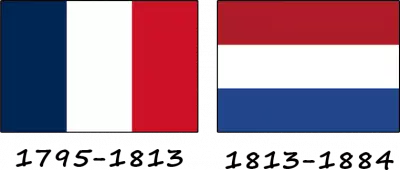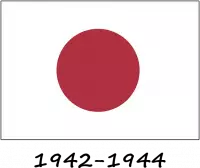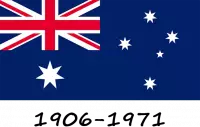Archaeological excavations indicate that people have been on the island of New Guinea for about 60,000 years. The first settlers probably arrived there by sea from Southeast Asia during the Ice Age. In terms of contact with Europeans, the first sailors to reach New Guinea were the Portuguese and Spanish in the early 16th century. They traded with the locals, exchanging pottery, shells, food, and forest resources. The famous Portuguese explorer Jorge de Menezes was probably the first to reach the shores of New Guinea in 1526-1527. At the same time, the Spaniards, in particular Alvaro de Mendaña, also explored the region in the 1560s. Despite the explorations of Spanish and Portuguese navigators, their flags did not establish themselves on the territory of New Guinea, as these states did not exercise long-term political or military control over the islands.

In the 17th century, the Dutch actively explored the region and systematically mapped New Guinea. In 1623, the Dutch navigator Jan Carstens visited the southern coast of New Guinea. However, as in the case of the Spanish and Portuguese, the Dutch did not establish a permanent colony and therefore did not plant their flag on the territory. The British also made expeditions to Papua New Guinea before the official declaration of the protectorate in 1884. One of the most famous explorers was Captain James Cook, who visited neighboring islands such as New Ireland in 1774 on his second voyage to the Pacific.

Although Cook did not land on New Guinea, he did influence later British exploration and colonial efforts. In the 18th and 19th centuries, French explorers also traveled to Papua New Guinea. For example, Louis Antoine de Bougainville conducted research in the Pacific in the 1760s. Although he did not plant his flag on the island, his expedition was part of a broader French interest in the region. Beginning in 1884, the territory of modern-day Papua New Guinea became the object of colonial rule by two powers, Britain and Germany. It was impossible for two states to simultaneously govern the same territory, so the territory was divided into:
- British New Guinea: Britain ruled the southeastern part of New Guinea, including the territory known today as Papua;
- German New Guinea: Germany controlled the northeastern part of the island, including the adjacent islands that are now part of Papua New Guinea.
The flag of British New Guinea was the Union Jack, and the flag of German New Guinea was the Imperial German flag (black, white, and red tricolor), flown in the canton, with a black lion holding a red heraldic lily on the right side of the flag. The lion symbolizes strength and power, and the heraldic lily symbolizes nobility and purity.

In addition to the usual British Union Jack, there are British colonial flags that have a typical design: the Union Jack in the upper left corner (canton) and various symbols, letters or coats of arms on the right side of the flag (usually on a blue or red background). Such flags were also used on the territory of modern Papua New Guinea:
- “N.G.” (New Guinea): This flag was used to denote the territory of British New Guinea and the British administration. The flag had a traditional blue or red background (depending on the purpose: red for the civilian navy and blue for government agencies) with Union Jack in the canton. On the right side of the flag were the letters “N.G.” - an abbreviation for “New Guinea”;

- “B.N.G.” (British New Guinea): This version of the flag represented “British New Guinea”, which became an official colony in 1888. The design was similar to the previous version: Union Jack in the canton and the letters “B.N.G.” on the right side of the flag;
- “T.N.G.” (Territory of New Guinea): After the First World War, when German New Guinea came under the mandate of the League of Nations, the territory was transferred to Australian administration as the “Territory of New Guinea”. The flag used in this territory was a traditional British design with the letter “T.N.G.” on a blue background, symbolizing “Territory of New Guinea”;

- “PAPUA": The flag with the inscription “PAPUA” was used to denote the Papua Territory, which included the southeastern part of New Guinea after it came under Australian administration in 1906. This flag symbolized the administration of the territory under the Australian mandate.
During the Second World War, in 1941, Japan already controlled significant territories in Asia, including the Philippines, Indonesia, and islands in the Pacific Ocean. As part of its expansion plan, the Japanese army launched an invasion of New Guinea in early 1942. Their first success was the capture of Rabaul on the island of New Britain in January 1942, which quickly became the main Japanese military base in the region. Japan gained control of cities such as Madang, Vevak, and Buna, while the southern part of New Guinea, including Port Moresby, remained under the control of the Allies, who managed to stop the Japanese forces in the Battle of the Coral Sea and during the Kokoda Road campaign. The Japanese flag, known as the Hinomaru (日の丸), was raised in the occupied territories.

One of the most important battles was the Battle of Mila Bay in August 1942, where Japanese troops were defeated by Australian and American forces. The Kokoda Road Campaign, which lasted from July to November 1942, was one of the most difficult battles on the Pacific Front, when the Japanese tried to capture Port Moresby but were defeated. In 1943, the Allies launched a large-scale counteroffensive, gradually pushing Japanese troops out of New Guinea. By the end of 1944, the main Japanese forces were defeated or retreated, and the territories of New Guinea were liberated from occupation. After the war, Papua New Guinea returned to the control of Australia, which governed it until independence in 1975.
Thus, the last flag used until the adoption of the modern flag in 1971 was the Australian flag. But it was used for several periods:

- Papua Territory (1906-1949): In 1906, British New Guinea was placed under Australian administration and changed its name to Papua Territory. The Australian national flag was used for official purposes throughout the territory, on administrative buildings, government offices, and during official events;
- Territory of New Guinea (1919-1949): After the First World War, when German New Guinea was placed under the League of Nations mandate and came under Australian administration, the Australian national flag was also used in this territory;
- The United Administration of Papua and New Guinea (1949-1975): In 1949, the territories of Papua and New Guinea were united into a single administrative unit, the Territory of Papua and New Guinea. During this period, the Australian flag remained the main official flag.














